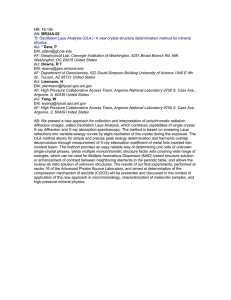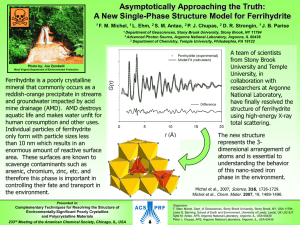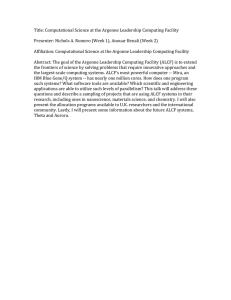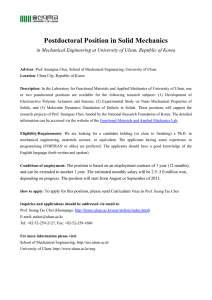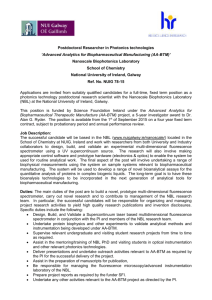Quantitative x-ray phase imaging at the nanoscale by
advertisement
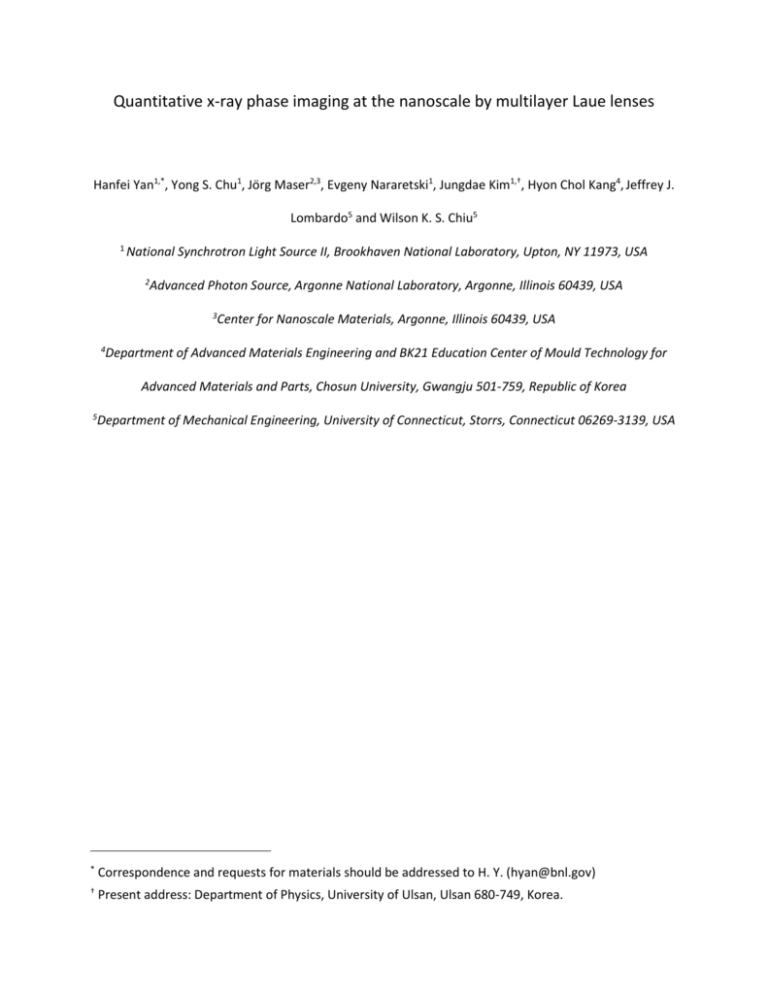
Quantitative x-ray phase imaging at the nanoscale by multilayer Laue lenses Hanfei Yan1,*, Yong S. Chu1, Jörg Maser2,3, Evgeny Nararetski1, Jungdae Kim1,†, Hyon Chol Kang4, Jeffrey J. Lombardo5 and Wilson K. S. Chiu5 1 National Synchrotron Light Source II, Brookhaven National Laboratory, Upton, NY 11973, USA 2 Advanced Photon Source, Argonne National Laboratory, Argonne, Illinois 60439, USA 3 Center for Nanoscale Materials, Argonne, Illinois 60439, USA 4 Department of Advanced Materials Engineering and BK21 Education Center of Mould Technology for Advanced Materials and Parts, Chosun University, Gwangju 501-759, Republic of Korea 5 Department of Mechanical Engineering, University of Connecticut, Storrs, Connecticut 06269-3139, USA * Correspondence and requests for materials should be addressed to H. Y. (hyan@bnl.gov) † Present address: Department of Physics, University of Ulsan, Ulsan 680-749, Korea. SUPPLIMENTARY MATERIALS FIGURE S1 a b c 1.4 1.0 1.2 0.8 200 nm 0.8 -200 0.6 0 x (nm) Intensity (arb. unit) Intensity (arb. unit) 30 nm 1.0 200 0.4 0.2 52 nm 0.6 -200 0.4 0 y (nm) 200 0.2 0.0 0.0 0 100 200 300 x (nm) 400 500 600 0 100 200 300 400 500 600 y (nm) Figure S1 SEM image of the test structure a and fluorescence line scans across a double-line structure with a gap size of 20 nm in horizontal b and vertical c directions. Insets are the best-fitting probe profiles in respective directions. FIGURE S2 a b Figure S2 Far field diffraction patterns from the focusing optics, a without and b with specimen. FIGURE S3 a b c d Figure S3 a Phase image of the specimen. b-d are the zoom-in phase, transmission and Ni fluorescence images of the rectangular area in a, respectively. Pixel size in b-d is 30 nm. FIGURE S4 a b Figure S4. Images of the fitting residue error in x a and y b directions. A larger error appears on sharp boundaries where the effect of high-order expansion terms of the phase function is more appreciable. The root-mean-square error normalized to the total intensity, Rl ,m / I tot , is in the order of 10-3 in this case. This indicates that a linear phase term is good enough to approximate the local phase variation.
